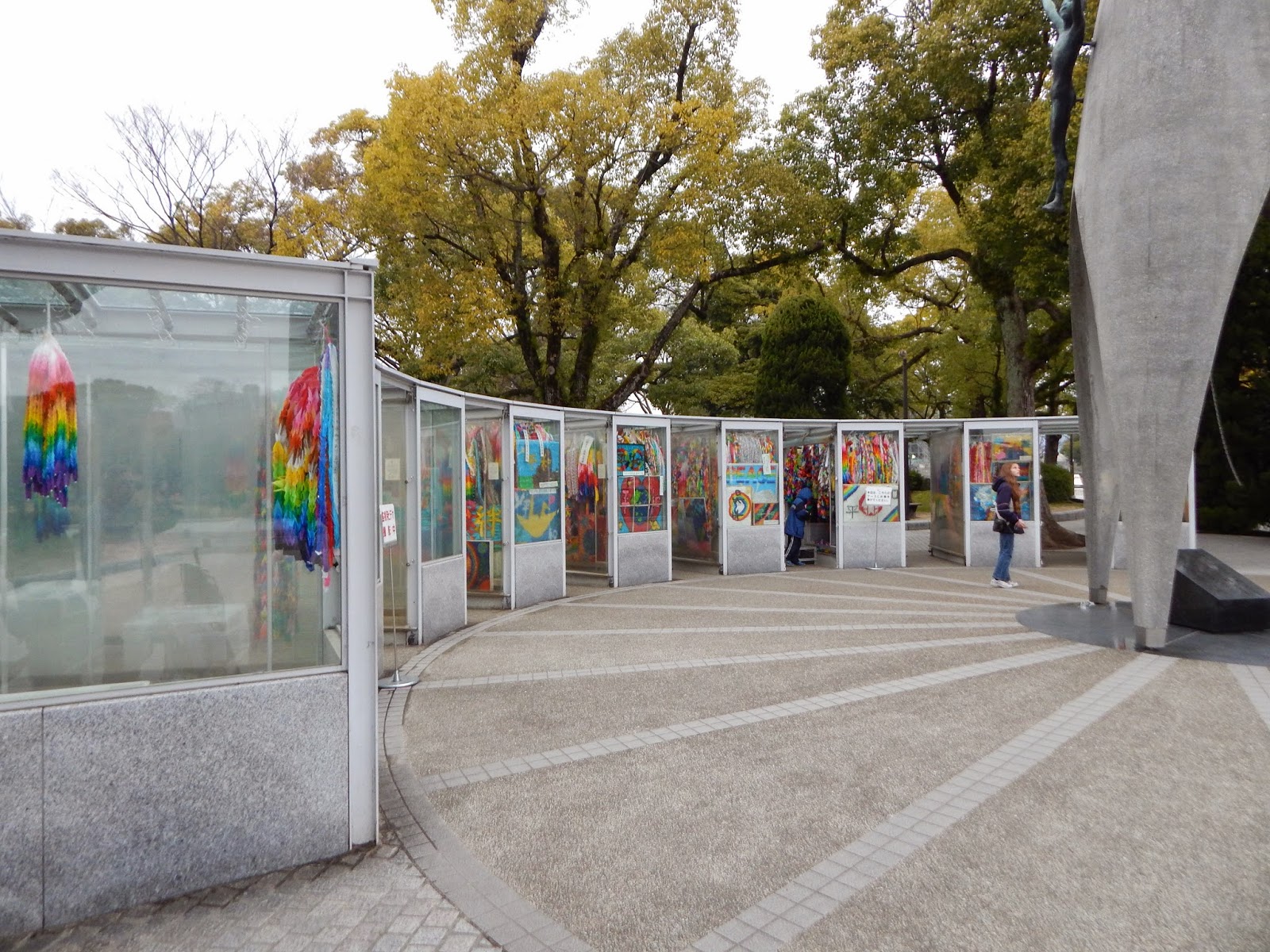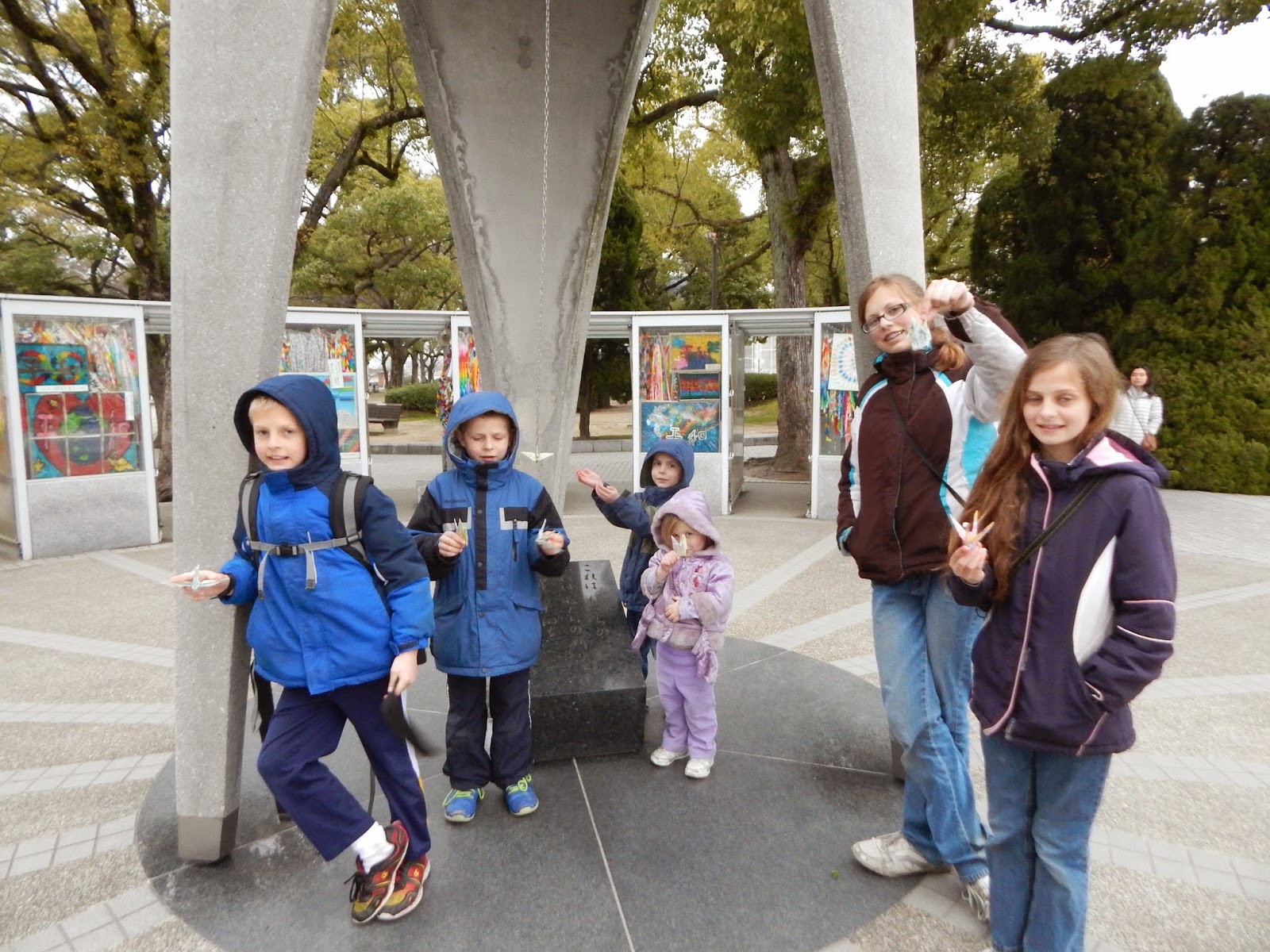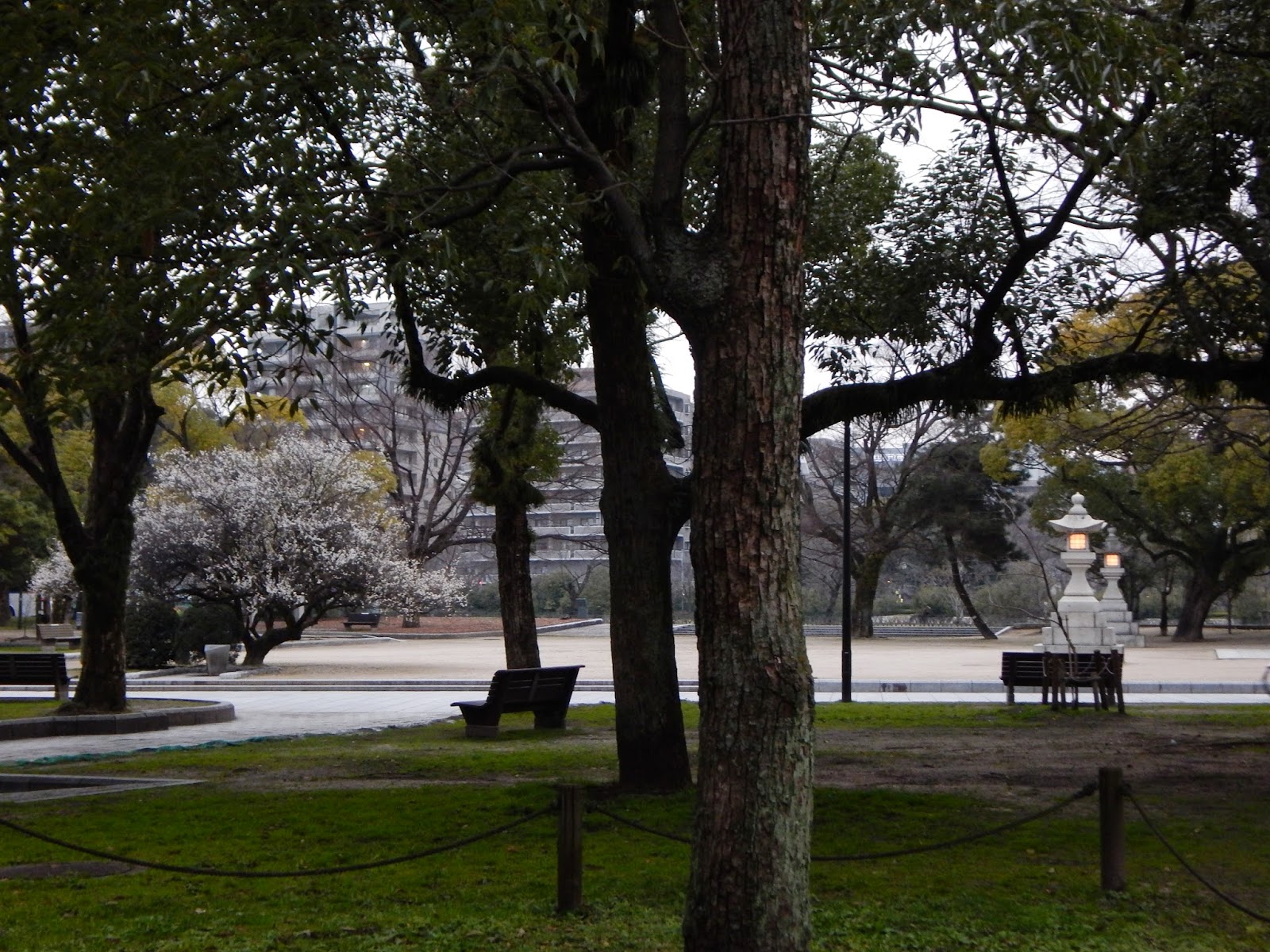After we went through the museum, it was time to go through the Peace Memorial Park. It was designed to help one feel at peace with what happened. We would see how it made us all feel after we went through it. We were still a little upset by everything that we had been exposed to in the museum.
We found a bench and had a little snack and talked as a family about how we felt about the things in the museum and discussed America's need to drop the bomb to end the war once and for all.
Many people say that America should not have dropped the A-bomb because of the huge civilian lives that were lost, as well as how truly horrendous the devastation was afterward. But, these people do not know the Japanese people. The Japanese at the time were never, ever going to surrender--it was not a part of who they were. These same people do not know the history of the Battle of Okinawa. These people do not know about the Japanese invasions of their Asian neighbors. These people do not know that Japanese people did not see dying as a bad thing. It was noble to die for their country, and they would be celebrated afterward. These were the things we discussed with the kids as we had a snack. Was it awful? Of course. Do we wish it never happened? Of course! But, what other choice was there? An invasion of Japan similar to what happened at Okinawa would have cost many more lives on both sides of the war. It was a horrible tragedy, but the U.S. didn't see any other choice. The human race needs to learn from this tragedy and do everything they can to never let ourselves get in a similar situation. The Japanese way since this tragedy has been to advocate for peace. That's what this park is all about. Advocating for peace and creating peace within one's soul after going through the museum.

This statue is the image of a mother, who is trying to overcome difficulties, clinging to her child while covering another baby with her other hand. It's pretty haunting.

A fountain with a clock stuck on the time 8:15...which is the time that the bomb was dropped.
This monument stands in the center of the Peace Park. It resembles an ancient arch-shaped house, in part because of the desire to shelter the souls of the victims from the elements. Through the monument you can view the Peace Flame and the A-Bomb Dome. The monument is inscribed with the words, "Let all the souls here rest in peace, for we shall not repeat the evil." The stone chest in the center holds the names of people who died from the bombing, regardless of nationality.
This flame of hope for world peace has never burned out since August 1st, 1964. The pedestal was designed to suggest two hands pressed together at the wrist and bent back so that the palms point up to the sky. It is a symbol of the message: "Let's keep burning the fire until nuclear weapon is eliminated from the entire earth".
The flame of hope with the museum in the background.
At the Children's Peace Monument. After Sadako Sasaki's death, a campaign began to raise funds to build a memorial for Sadako and all of the children who died from the effects of the atomic bomb.
A bronze girl who holds a gold crane is standing on the top of the domed statue, and located next to the domed statue there are the statues of boys and girls symbolizing bright future and hope.
The bell inside of the Children's Monument.
There are millions and millions of paper cranes that are sent to this monument every year. They house them in these clear booths.
If you are going to leave a crane, they want you to register beforehand. Caitlin took care of the registration for our cranes.
After we finished the book on Sadako, we made several paper cranes (and other types of origami) and selected our very best ones to bring with us on our trip and leave at the Children's Monument. Here are the kids with their paper cranes that they are going to leave here.
Nathan hung his on the chain of the bell in the center of the monument. Some Japanese ladies were snapping pictures of him with his paper crane.
Putting our now registered paper cranes in the bin with millions of others.

This building was a short distance from the Children's Monument. This structure was a concrete building unlike the usual buildings made from wood at the time of the blast. The building was situated only 170 meters from the hypocenter and when the bomb exploded over this building the roof was crushed, the interior destroyed, and everything consumable burned except in the basement. Despite its proximity, it retained its basic shape because it was solidly built with few openings toward the hypocenter side. Thirty-seven people were working there at the time. All died except for one man who had gone down to the basement to get documents. He was the person who was the closest to the blast and lived through it. He died in June 1982. The building is now a souvenir shop and we went inside for a few minutes to warm up.
A picture of the A-bomb Dome building as it was before the bomb and the building itself across the river.
The Peace Bell is hung inside a dome-shape roof representing the universe. The Bell is symbolic of creating a world of peace and harmony, free of nuclear weapons.
The Atomic Bomb Memorial Mound, where it is estimated that the remains of 70,000 people are cremated in a vault inside the mound. Because this spot was close to the hypocenter, numerous corpses were collected here during the aftermath and then cremated.
The view of the river while we were standing on the Aioi Bridge.
This bridge was built in 1932 and was the target for the atom bomb. Surprisingly, it survived the explosion and was usable for 35 more years.
The entire view of the bridge.
Finally, we came to the A-Bomb Dome Building, which is the building closest to the hypocenter of the nuclear bomb. It has been left as it was found after the bombing in memory of the casualties. There was scaffolding around it because there were tests being conducted on it. It is such a precious historical landmark that needs to be preserved, hence tests are conducted every three years to make sure that it will continue to stand through future generations. Even through the scaffolding, we could see the burn marks on the concrete and brick walls.
A small shrine next to the A-Bomb Dome.
The sun had set, it was time to go. As we prepared to leave the park, we all affirmed that we did feel better after spending some time here. Somehow, peace was able to come into our hearts as we walked around.



























No comments:
Post a Comment